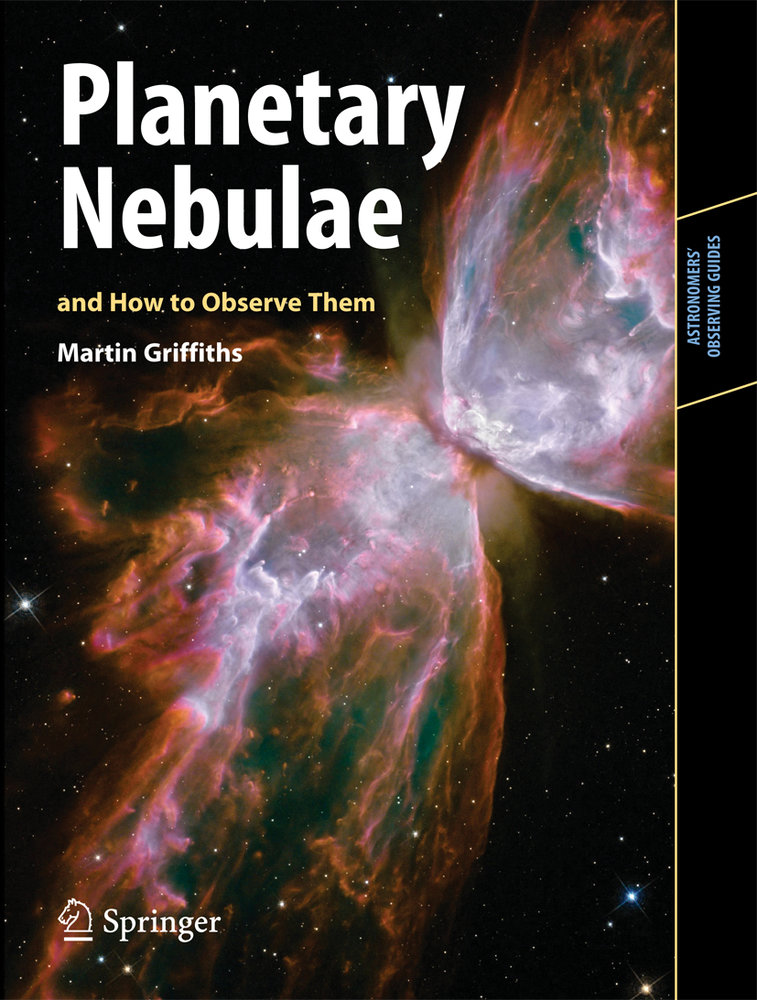Astronomers' Observing Guides provide up-to-date information for amateur astronomers who want to know all about what is it they are observing. This is the basis of the first part of the book. The second part details observing techniques for practical astronomers, working with a range of different instruments.
Planetary Nebulae and How to Observe Them is intended for amateur astronomers who want to concentrate on one of the most beautiful classes of astronomical objects in the sky. This book will help the observer to see these celestial phenomena using telescopes of various apertures.
As a Sun-like star reaches the end of its life, its hydrogen fuel starts to run out. It collapses until helium nuclei begin nuclear fusion, whereupon the star begins to pulsate, each pulsation throwing off a layer of the star's atmosphere. Eventually the atmosphere has all been ejected as an expanding cloud of gas, the star's core is exposed and ultraviolet photons cause the shell of gas to glow brilliantly - that's planetary nebula.
Topics covered in this book include the astrophysical makeup of planetary nebulae, a history of their discovery, classification and description, telescopes, filters and observing techniques - in short everything anyone would need to observe planetary nebulae.
A special feature of this book is the inclusion of over 100 nebulae in our Milky Way Galaxy personally observed by the author using telescopes of various sizes, enabling readers to make up their own observing program or to follow the authors program. The guide also includes photographs by the author of each object for ease of identification along with their celestial coordinates, magnitudes and other pertinent information.
Here is a volume that should be a welcome addition to any amateur astronomer's personal library, observing course, or school. With it in hand, you can begin sampling right away some of the most captivating objects in thesky.
body>




